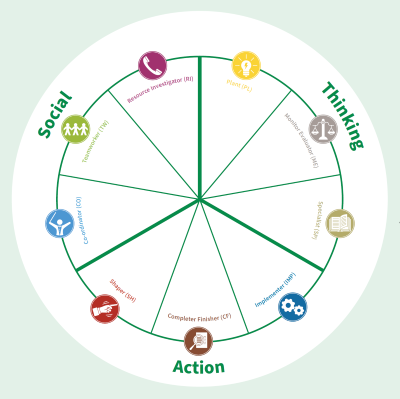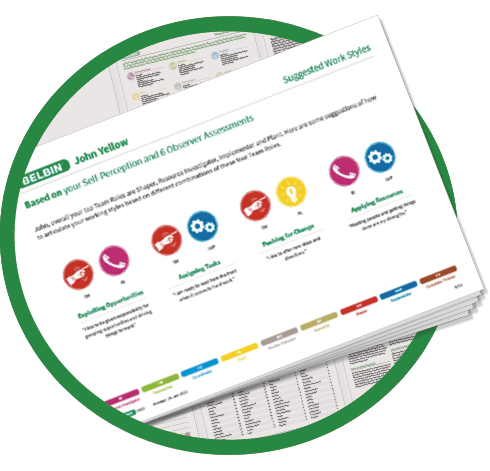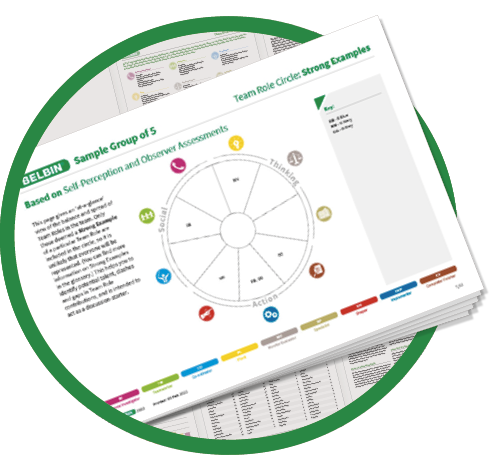Effective communication plays a key part in engagement and team performance, and is shown to reduce stress and conflict.
When you ask teams what is needed for success, ‘good communication skills’ is one of the most popular responses.
But 69% of managers say they’re uncomfortable communicating with members of the team, and the situation is bound to be at least as bad the other way around. What’s more, 80% of our time at work is spent communicating in meetings, on the phone and via email.
As we have taken communication online over the past few years, we have encountered new challenges. Sometimes a lack of communication hinders progress or results in misunderstandings. Depending on the type of communication, remarks can be taken out of context, or we can misread tone or body language.
So, if we know communication is important, how do we go about analysing, diagnosing and improving how we interact with others? And how do ensure that team members share this learning and use it towards a common goal?
Where do we begin?
The first step towards more effective communication within a team is to understand the different styles people use in the work environment.
There are a number of ideas and frameworks we can overlay on communication – all manner of colour schemes and acronyms based on techniques and personality types. But how do we move from theory to evidence? Where do we find those insights?
But how do we move from theory to evidence? Where do we find those insights?
In the 1970s, Dr Meredith Belbin and his research team spent a decade studying people interacting in a simulated team game (more on that here) and used a method called ‘Bales Analysis’ to schematise and record group communication every thirty seconds during the exercise.
The results were the original ‘big data’. The researchers uncovered nine clusters of behaviours (or ‘Team Roles’) that were effective in facilitating team progress.
Each Team Role has its own characteristics – a set of strengths and weaknesses which drive (and sometimes hinder) communication.
In balanced teams, where different Team Roles are represented, the team will benefit from cognitive diversity, or differences in approach. However, this source of strength can work to the team's disadvantage, if communication is not understood and handled correctly.
"The single biggest problem is communication is the illusion that it has taken place."
– George Bernard Shaw
Understanding the 'why'
It’s useful to understand others’ underlying purpose in communicating. Are they trying to express themselves or their ideas? Are they trying to establish priorities, outline alternatives or explain something?
For example:
- Those who have Plant tendencies come up with new ideas to solve difficult problems.
- Completer Finishers want to get to grips with the details, so they can be sure that every 'i' is dotted and every 't' crossed.
- Co-ordinators are good at drawing out others' contributions, with a view to promoting consensus and moving the team towards its objectives.
With these differing priorities, each team member might approach the same problem from a different angle.
Team Roles can influence not just what people say but how they say it – and how they receive the response.
If two people have very different Team Roles with few strengths in common, they can snatch defeat from the jaws of victory, simply by making the point from two different perspectives.
Understanding what drives communication – and that it is distinct for different people – develops trust and helps to build relationships. In short, it gives us an insight into someone else’s ‘why’ and helps us communicate effectively.

Team Role communication styles
Our Belbin Team Role preferences can influence team collaboration – how we interact with others. The nine Belbin Team Roles can be divided into groups of three: Action, Thinking and Social roles. This helps us to schematise communication styles more easily.
Action oriented roles
- Shaper, Implementer and Completer Finisher (sometimes ironically misnamed 'Complete Finisher') are focused on task and outcomes. Accordingly, their interaction is likely to be around getting things done: what needs to be accomplished and when.
Thinking (or thought oriented) roles
- Monitor Evaluator, Plant and Specialist are the thinking or cerebral roles. Whilst each approaches solving problems in different ways, they share challenges with communicating thoughts and ideas with colleagues.
Socially oriented roles
- Resource Investigator, Co-ordinator and Teamworker (you'll sometimes find this as 'Team worker') are the social roles. Of the three groups, these tend to be the most natural communicators, but this is not to say they don’t encounter difficulties. For this group, on the whole, the subtleties are likely to be around knowing when to talk and when to let others contribute.
Join over 25,000 people who receive our research and insights once a week. Unsubscribe any time.
Context
As well as the characteristics of the Team Role (or group of roles) in question, there is the issue of context. Teamworkers, for example, are likely to be good at one-on-one, informal communication in the team, but might struggle with speaking out in meetings, especially when tensions are running high. Plants are most likely to be poor communicators when talking about new ideas and Specialists, when expounding their area of expertise.
From intuition to evidence
Insight into your own communication style, and those of your colleagues, can help improve everyday interactions. You may already have some ideas about the way you and they tend to communicate -- where this works well and where it can give rise to problems, and how this fits in with the Belbin Team Roles.
But there are complexities.
It’s important to note that no one is just one Team Role. We all have a number of preferred, manageable and least preferred Team Roles which characterise how we prefer to work, and the unique combination of these shapes how we interact with others
A Shaper-Teamworker might be able to strike the balance between being forthright and diplomatic, whilst a Shaper-Resource Investigator is more likely to err on the side of outspoken.
You may also need to consider:
- Who might most easily deal with sensitive issues or upset customers?
- Who is best placed to negotiate?
- Who should be involved in broad-scale discussions around strategy and who should you send in to hash out the fine print?
- How do you prevent the deadline-focused Shaper from rushing the Monitor Evaluator who needs time to deliberate and explain their thinking?
- How does your combination of styles work within your company culture and alongside those of your colleagues?
Sometimes we think we can identify colleagues’ and clients’ Team Roles right away.
In other cases, it’s tricker to work out, and aspirations come into play too. Also, identifying a difference doesn’t necessarily put us on the track to improving working relationships.

This is where the Belbin reports come in. The Belbin Individual report looks at your combination of roles and gives in-depth guidance and advice on how to articulate your strengths and to best effect and manage common difficulties that arise from your style. This is drawn from your own questionnaire responses and feedback from colleagues, to give you a rounded view of how you come across to others.
The 'Suggested Work Styles' page, in particular, analyses combinations of your top Team Roles and offers words and phrases to describe how you tend to work most effectively.
The Belbin Team report then aggregates your data with that of your team, so that you can begin to build a picture of how the team is communicating and how to tackle conflicts and misunderstandings which arise from differing priorities. This is an invaluable tool for team leaders or when embarking on team building sessions.

How can we help?
Excited to discover your own styles? Need to get your team communicating more effectively? Belbin reports are only a few clicks away. Or if you need more information, we're always happy to chat.
Interested in the Belbin Reports?
Have a question?
Please complete this form and we will get back to you.